Functionally, the purpose of a bathroom fan duct is to conduct exhausted air from the bathroom to the outside. Practically, the duct has to be sized so as to create the correct pressure system that will allow this movement of air to be efficient.
This is your one-stop guide for bathroom fan duct lengths and dimensions. We provide easy-to-use tables, and give you an understanding of how the dimensions influence the effectiveness of mechanical bathroom ventilation, which will better equip you to install and maintain your bathroom fan ducting.

Most bathroom fans have 4” or 6” connections. Larger bathrooms require stronger fans and larger ducts. At a fixed fan strength, increasing duct diameter allows longer ducting. At a fixed diameter, increasing fan strength reduces the allowable duct length.
How Ducts Conduct Bathroom Air to Outside
When you install a bathroom fan and duct system, you are ventilating the room actively. This means that energy is exerted, creating a pressure gradient within the ducts that causes air to flow from the bathroom to the outside.
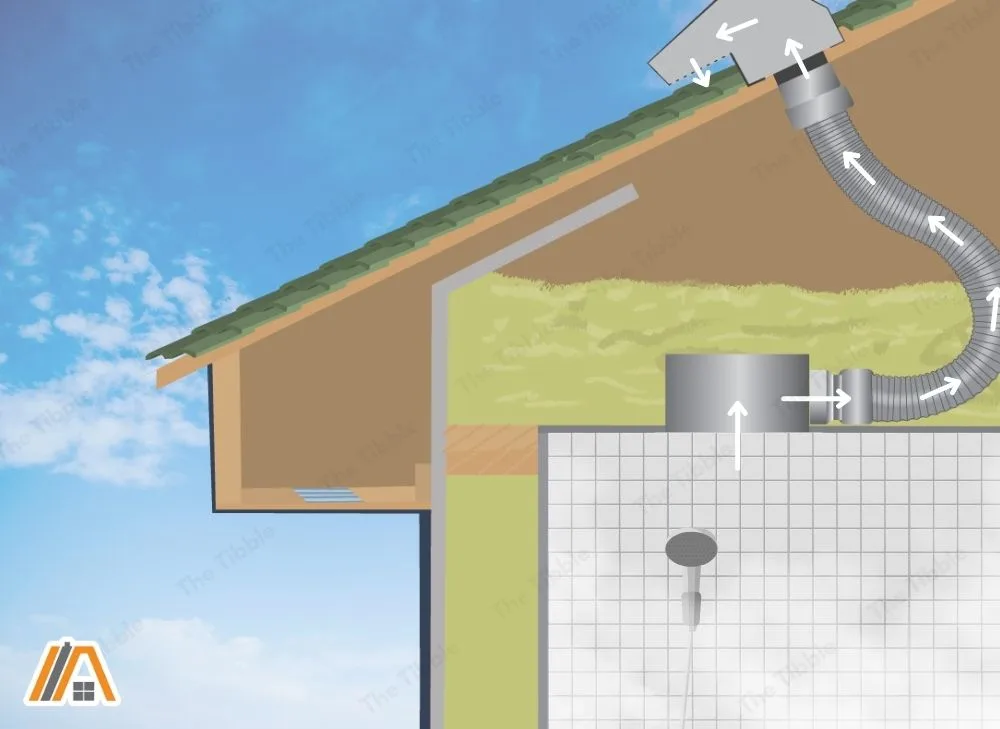
The mechanical fan actively pulls air into the duct creating a point of high air pressure behind the fan.
The air outside the terminal vent has a lower pressure because it is not confined to a fixed volume like the air in the duct.
Additionally, the further away from the fan, the lower the duct pressure.
So, air moves from the area of highest pressure behind the fan to each progressively lower pressure area along the ducting and finally out into the lower pressure outside area.
For fixed and appropriate duct dimensions, the more powerful the fan, the greater the pressure generated, and the greater the rate of airflow along the duct. This is why bathroom fans are given an airflow rating in cubic feet per minute (CFM).
You can learn more about how bathroom fans are rated here.
How Duct Diameter Influences the Flow of Air
In terms of duct diameter, the wider the duct is, the more effective the ventilation system will be because a larger percentage of the air flowing through the duct will not make contact with the walls of the duct. Air in narrower ducts is more affected by friction, which impedes airflow and airflow rate.
Additionally, using a duct that is too small creates a lot of noise as the increased friction creates airflow turbulence.
You do, however, have to consider the space available to you for ducting because there is no point in using a wide duct, and then having to to squash it down to fit in the walls.
4” or 6” Duct for Bathroom Fan
The two most common duct diameters for bathroom fans are 4” and 6”, and there is a good reason for this.
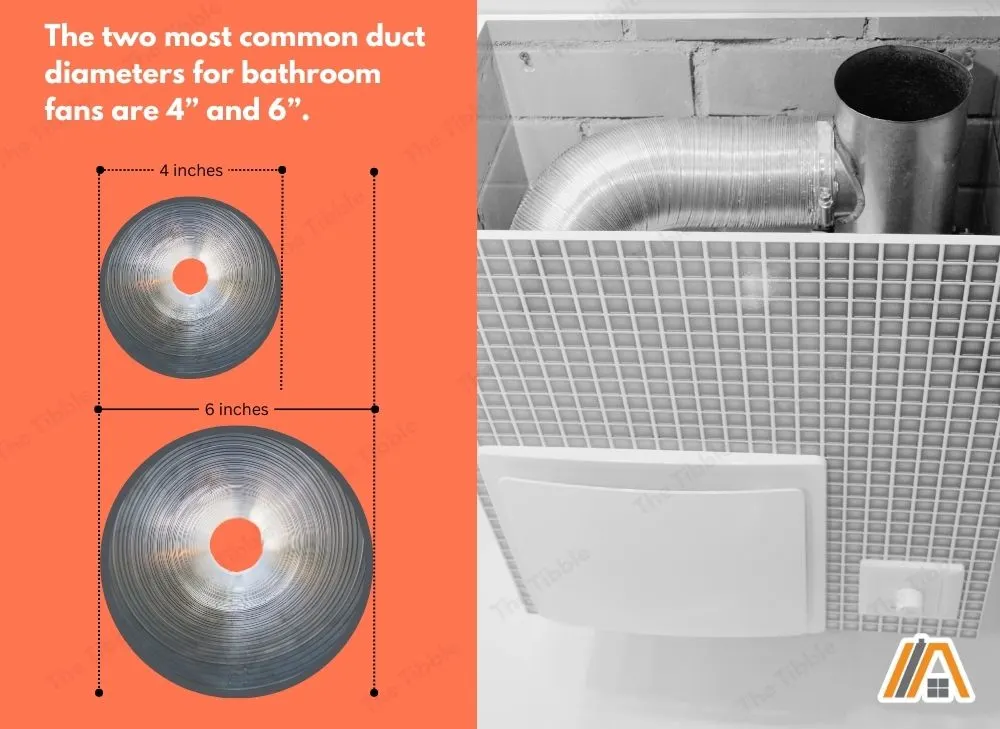
First, you need to know that the size of the bathroom determines the fan capacity you need (you can calculate the correct CFM rating your bathroom fan needs here).
Then, the fan capacity determines the correct duct diameter because it will affect the amount of pressure created in the duct. Ducts that are 4” to 6” are suitable for most common bathroom fan capacity requirements.
Furthermore, because 4” and 6” are most often the appropriate diameters for bathroom fan ducts, most bathroom fans are made with 4” or 6” connection points. This makes the job of choosing the right size duct very easy; you simply look at the connector.
You should know that some fans come with an adapter for a different size duct, but you should always avoid sizing down. So, if your fan has a 6” connection and a 4” adapter, stick with a 6” duct.
You can get 5”-diameter ducts, but they are relatively superfluous. A bathroom fan that requires a duct larger than the 4” will work better with a 6” diameter than a 5″ one, and the 6″ ducts are more widely available.
If you consider your bathroom to be larger than average, you should use the calculator we linked above because you may need a stronger fan and a bigger duct.
Bathroom Duct Sizing Table
According to IRC Chapter 15, Table 1505.4, the minimum mechanical exhaust capacity for bathrooms and toilet rooms is 50 cubic feet per minute (CFM) if the exhausting is intermittent, so this is why we have not included CFMs lower than this in our tables.
However, you should check your state and local codes as they might specify something higher. For example, Oregon’s Code says that it has to be 80 CFM minimum if the bathroom has a bath facility, but if it is a toilet and basin alone, then 50 CFM is sufficient.
| Bathroom Fan Capacity (CFM) | Appropriate Diameter Range | Recommended Diameter* |
| 50 | 3” to 4” | 4” |
| 80 | 4” to 5” | 4” |
| 100 | 4” to 6” | 6” |
| 125 | 5” to 6” | 6” |
| 150 | 6” to 7” | 7” |
| 200 | 7” to 8” | 7” |
| 250 | 7” to 8” | 8” |
| 300 | 8” to 9” | 8” |
How Far Can a Bathroom Fan Vent Run?
The distance that your bathroom fan duct can run depends on the following factors:
- The combination of fan airflow rating and duct diameter
- The type of ducting
- The number of elbows used
The regulations governing duct length are calculated to ensure that the drop in air pressure that naturally occurs along the ducting (due to friction) doesn’t exceed the permissible air pressure drop.
If this were exceeded, the air would not move through the ducting as it should and ventilation quality would be compromised. If your duct run is too long, it can seem as if the fan is not removing the steam from your bathroom.
Remember that increasing the fan capacity is not necessarily going to allow you to run a longer duct system unless you increase the duct diameter as well.
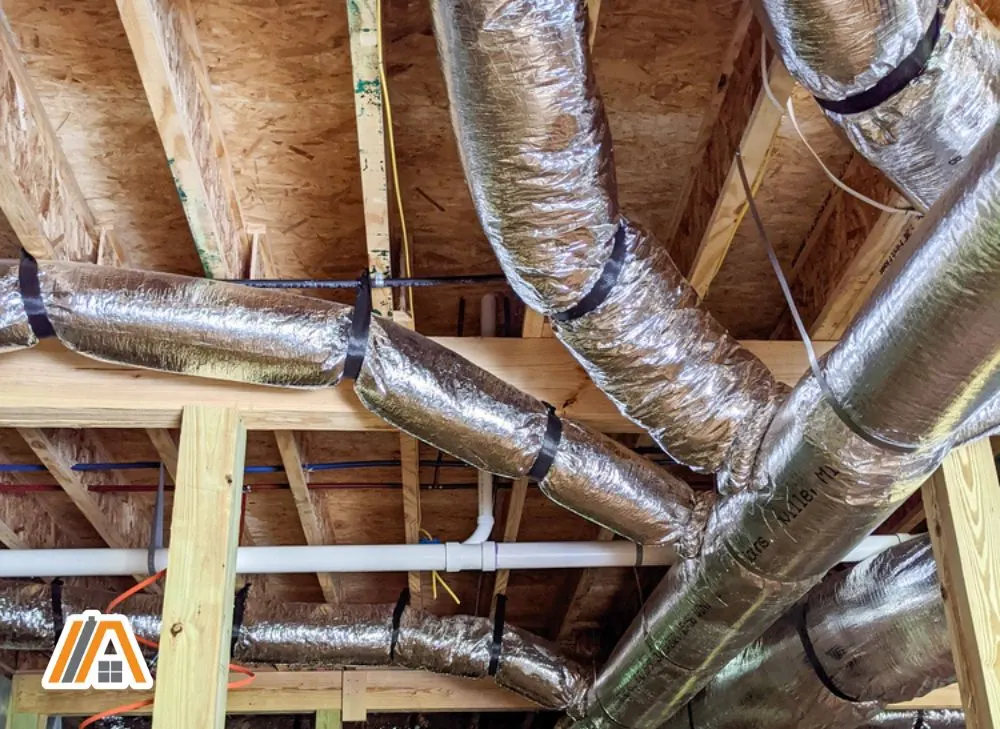
This is because a more powerful fan without a larger duct will result in more friction as more of the air is pressed against the sides of the ducts, which leads to greater pressure loss. It will also be frustratingly loud.
If a quiet bathroom fan is important to you, I would recommend reading this article on How Many Sones is a Quiet Bathroom Fan. I also list nine of the quietest fans available on the market to make your choice easier!
Bathroom Duct Length Table
The following tables are adapted from Table M1504.2.
The two main types of ducting are rigid and flexible, and they have different allowable length of ducting as you will see below.
There are definite advantages and disadvantages to the different types of bathroom fan ducting, so carefully decide what kind of duct to use.
For each elbow you add to the ducting, you have to remove 15 feet from the allowable duct length.
The IRC does not expressly limit the number of elbows you can use, but Oregon specifies a maximum of 3 elbows, so we have included the maximum ducting length with 0-3 elbows in our tables.
Flexible Duct Length Sizing Table
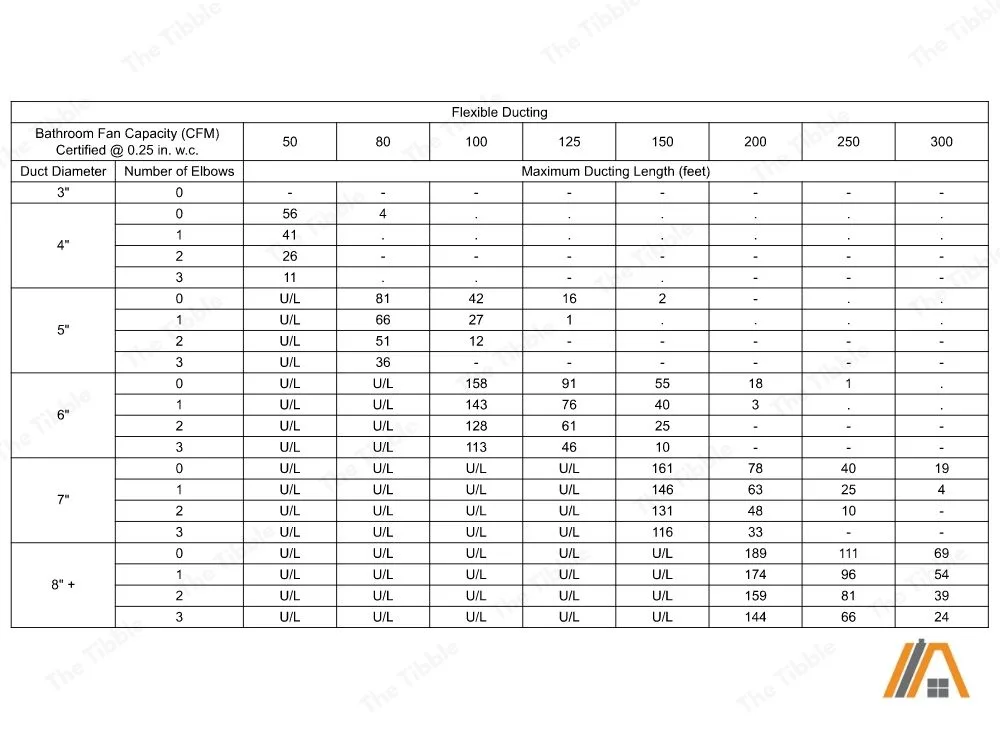
Related Article: Where Can Flexi Duct Be Used
Rigid Duct Length Sizing Table
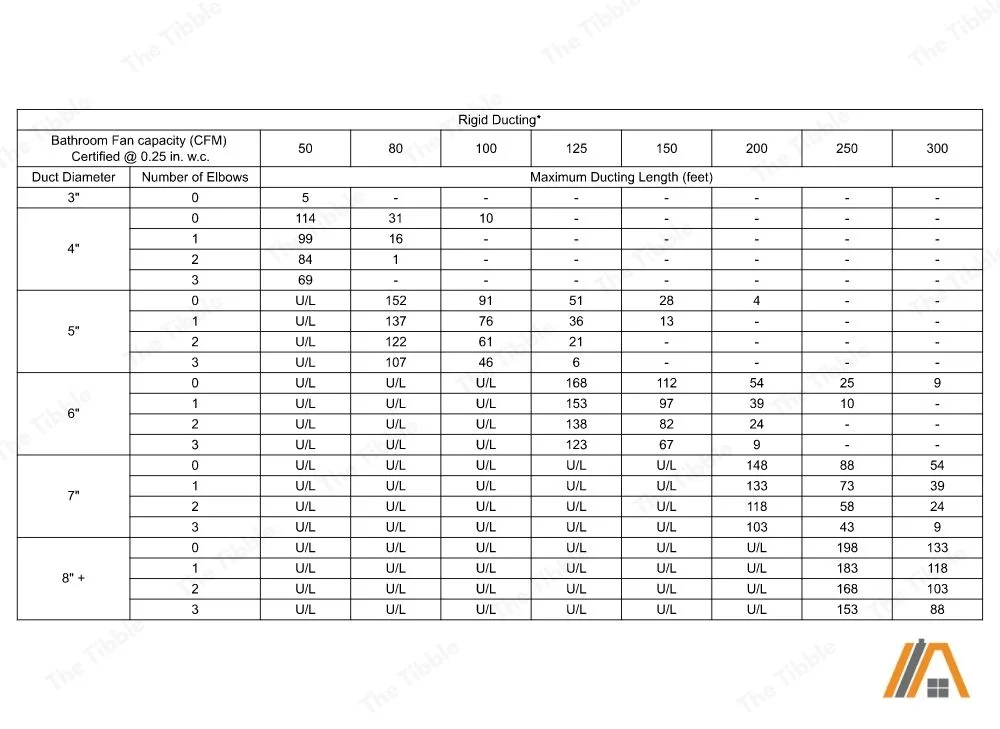
Sources
https://www.energyvanguard.com/blog/the-2-primary-causes-of-reduced-air-flow-in-ducts/
https://www.energyvanguard.com/blog/basic-principles-duct-design/
https://codes.iccsafe.org/content/IRC2018/chapter-15-exhaust-systems
https://www.achrnews.com/articles/102825-basics-of-airflow
https://www.aireserv.com/about/blog/2020/april/sizing-ductwork-is-my-ductwork-size-too-narrow-/
https://www.nrel.gov/docs/fy03osti/29166.pdf
https://homes.lbl.gov/ventilate-right/step-6-duct-design
https://www.engineeringtoolbox.com/equivalent-diameter-d_443.html
https://inspectapedia.com/Design/2011-IRC-Chapter-15-Exhaust-Systems-OR.pdf
